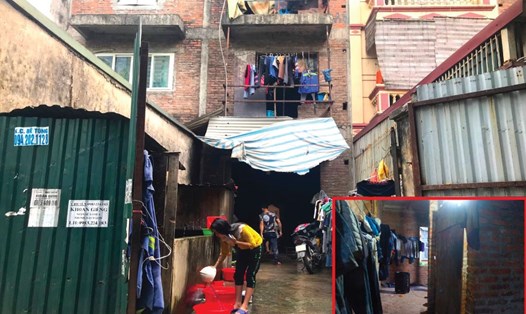Bodiam Council - Sussex, England: Bodiam Council was built by a knight of Edward III in 1385 with the intention of using it as a solid family decoration. After this clan died, the castle changed hands many times and was finally abandoned in the 17th century. The restoration of the castle has only been carried out since 1925. Currently, this is a tourist attraction. Photo: bodiam Newcastle.uk.
Leh Palace in Ladakh, India: Leh Palace was built from mud, wood, sand and stone in 1553. The 9-storey palace is home to royal members on the upper floors and has warehouses and horse cars on the lower floors. The palace was encroached upon in the 19th century and has been abandoned since then. Currently, this is a tourist attraction under the management of the Indian Archaeological Survey. Photo: Business Insider.
Jal Mahal palace in Jaipur, India: Jal Mahal is a "floating" palace in the middle of an artificial lake in Jaipur, India. In fact, the 4 levels of the building were submerged. Palace built in the 16th century with the original goal is a place to rest in the hunting trips of the royal family. However, drought, dams and lake expansion are the causes of the palace to be submerged within a century after construction. Photo: Atlas Obscura.
Kirby Hall - Northamptonshire, England: Kirby Hall was built in 1570 for the Imperial family of Queen Queen Queen Queen Queen Elizabeth I. The garden has been abandoned since 1810. Although it is a ruined building, this project is still maintained by the British Heritage organization. Decorations have also been used as film sets or to welcome tourist groups. Source: English Heritage.
Sans Souci Palace in Milot, Haiti: Sans Souci Palace is located in the northern mountains of Haiti and was completed in 1813. This is the house of King Henri Barshe lived until he died in 1820. The palace is known as "Versailles of the Caribbean region". The palace was later damaged in the earthquake in 1842.
Duckett's Grove castle in Carlow, Ireland: Built in the 1800s on the vast land of the famous Duckett family. The castle was burned down in 1933.
Pidhirtsi Palace in Lviv, Ukraine: Pidhirtsi Palace was designed by Italian architect Andrea dell'Aqua in the 17th century as a home for Polish military commanders. The palace was later converted into a hospital for tuberous patients during World War II. After that, this palace was abandoned. Currently, this is a tourist destination.
Grand Hotel de la Foret in Corsica, France: Built in 1893, Grand Hotel used to be a luxury hotel with large stairs and many tennis courts. The hotel is specially designed to have a sense of security. After World War II, the hotel struggled to attract guests, then closed and was abandoned.
Bologclyffe castle in New York, USA: Built in 1853, Bologclyffe castle once belonged to a Manhattan resident named Elizabeth Schermerhorn Jones. The villa used to be very luxurious and inspired the phrase Following the Joneses. This real estate area was abandoned in the 1950s.
Gbadolite in Nsele, Democratic Republic of Congo: Gbadolite used to be a small village that was transformed by former journalist Mobutu Sese Seko into versailles of the thrall. Mobutu Sese Seko took power in the Democratic Republic of Congo in 1965 and renamed the country Zaire, while calling himself president. In addition to Mobutu's headquarters, the property has a nightclub, hotel and an international airport next to it. After being overthrown by the army, Mobutu abandoned the palace and fled to Morocco in 1997. He died three months later from prostate cancer. The ownerless palace is now cared for by those who once supported Mobutu and their families.








